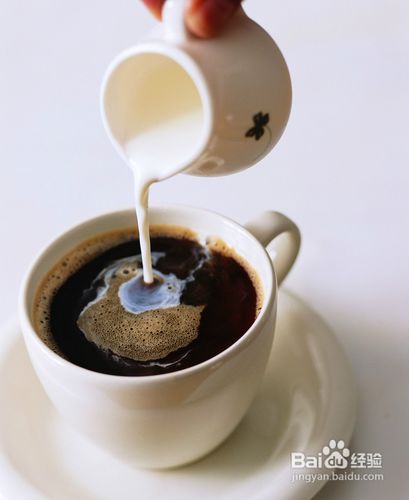Panamanian Cupid Coffee Flavor and taste introduction to boutique coffee beans in the manor area
The Panamanian isthmus used to be Chibucha, Caribbean and other Indian departments.
Settlement.
In 1501, Panama was colonized by Spain and belonged to the Governor of New Granada. [5]
In 1821, Panama became independent and became part of the Greater Republic of Columbia. [5]
In 1830, after the disintegration of the Republic of Great Columbia, it became a province of the Republic of New Granada (later known as Colombia). [6]
In 1903, after defeating Britain and France, the United States signed a treaty with the Colombian government to build and lease canals, which the Colombian Congress refused to ratify. [5]
On November 3, 1903, American troops landed in Panama, instigating Panama to become independent from Colombia and establish the Republic of Panama. On November 18 of the same year, the United States acquired the permanent monopoly to build and operate the canal and the permanent use, occupation and control of the canal zone. And dug a canal in the bee waist area in central Panama, so that the canal area became a "state-in-state" in Panama. [5]
During World War II, the United States forcibly leased 134 military bases in Panama in 1947.
In September 1977, Pakistan and the United States signed the Panama Canal Treaty (also known as the Torrijos-Carter Treaty). [5]
In May 1989, in the Panamanian general election, both the ruling party and the opposition party claimed victory, so the election result was invalid. With the good offices of the Organization of American States, Rodriguez became interim president on August 31. Noriega, who opposes the US occupation, was appointed head of government on December 15. On the 20th, US troops invaded Panama. On the 21st, Ndalla, the former opposition presidential candidate sheltered by the United States, was sworn in as president at the US military base. [5]
In January 1990, Noriega surrendered to the US military and was taken to the United States to stand trial.
On October 4, 1994, the Pakistani parliament adopted a draft amendment to the Constitution, which provides for the abolition of the army and the establishment of a police force.
On December 31, 1999, Panama regained the sovereignty of the canal. [5]
On 28 October 2015, he was elected a member of the United Nations Human Rights Council for a term from 2016 to 2018.
In the Pokuit producing area, there are also many excellent manors, except the famous Emerald Manor, Alida Manor, Aqaba Manor and so on, all of which produce high-quality boutique coffee. This is not only due to the superior ecological conditions of the Pokuit region of Panama and the fertile volcanic ash soil of the Baru volcanic land. Another important factor is that the microclimate in the Poquet Heights of Panama is a unique and important resource for boutique coffee in the Pokuit region. This is the Panamanian environment from east to west, which allows the cold air to converge above 6500 feet through the Central Mountains, thus creating a variety of microclimates in the Pokuit region, making its temperature and rainfall very suitable for plant growth. so the coffee trees grown here are very good. Panamanian coffee is famous for the rose summer of the Jade Manor, and the producing area where the Jade Manor is located is also quite famous. It is located in the Boquete producing area of Chiriqui province. Boquete is a town of Chiriqui in its Riki province, located near the border between Panama and Costa Rica, close to the famous Baru Baru volcano, scenic, fertile soil, climate and soil very suitable for the production of quality coffee summer (Geisha) species was discovered in 1931 from the rose forest of Ethiopia and sent to the Coffee Institute in Kenya It was introduced to Uganda and Tanzania in 1936, to Costa Rica in 1953, and to Panama in the 1970s by Mr. Francis Coselazin of Dongba Seven Farm Garden, who received seeds from CATIE in Costa Rica and began to grow Rose Summer Coffee.
Geisha, sweeping the coffee world with the power of a hurricane, the coffee revolution is so fierce that the blue mountains of Jamaica and Kona of Hawaii, which have long occupied the throne of the coffee kingdom, have to stay away. This wild species, which originated in Ethiopia, is now widely used in major coffee producing areas after numerous battles, and its best spokesman is the "LaEsmeralda" estate from Panama.
History of Esmeralda Farm: founded by Hans Elliot, a Swede, in 1924, Esmeralda Farm was not a coffee grower but a ranch. Forty years later, in 1964, Mr. Danielupidason's grandfather, Ruth Lover. Mr. Bidasson bought Esmeralda Farm in order to have an old home after retirement. His grandfather, Mr. Ruth Lover Bidasson, was born in Sweden and was president of the Bank of America and director of United Nations development. His son, Mr. Brais Bidarsson, moved to Panama from California in 1973 and inherited to run his father's farm. In 1987, most of the farms were changed to grow coffee. In 1994, he invested in the machinery and equipment of refined coffee in order to create a brand. Mr. Brais Bidarson and his wife Susan also raised three children, Elligu (born in Philadelphia in 1966). Rachel (born in Sweden in 1967), Danielu (born in Panama in 1974)

Important Notice :
前街咖啡 FrontStreet Coffee has moved to new addredd:
FrontStreet Coffee Address: 315,Donghua East Road,GuangZhou
Tel:020 38364473
- Prev

Introduction to the characteristics of Guatemala Antigua Coffee Flavor Manor with Fine sour taste
Guatemala is located in the tropics, the northern and eastern coastal plains have a tropical rain forest climate, the southern mountains have a subtropical climate, the year is divided into two dry and wet seasons, with the wet season from May to October and the dry season from November to April of the following year. The narrow and fertile flatlands on the Pacific side of Guatemala have a tropical climate. The central plateau is also the cultural center of Guatemala, where the year-round temperature ranges from 1300 to 1800 meters.
- Next

Introduction to the characteristics of Ecuadorian Coffee Flavor Manor with well-balanced taste
West coast: including coastal plains and foothills, high in the east and low in the west, generally below 200 meters above sea level, with some hills and low mountains at an altitude of 600 to 700 meters. Belongs to the tropical rain forest climate, the southernmost end begins to transition to the savanna climate. The average annual precipitation decreases from more than 3000 mm to about 500mm from north to south. Central Mountains: the Andes enter Ecuador from Colombia
Related
- Detailed explanation of Jadeite planting Land in Panamanian Jadeite Manor introduction to the grading system of Jadeite competitive bidding, Red bid, Green bid and Rose Summer
- Story of Coffee planting in Brenka region of Costa Rica Stonehenge Manor anaerobic heavy honey treatment of flavor mouth
- What's on the barrel of Blue Mountain Coffee beans?
- Can American coffee also pull flowers? How to use hot American style to pull out a good-looking pattern?
- Can you make a cold extract with coffee beans? What is the right proportion for cold-extracted coffee formula?
- Indonesian PWN Gold Mandrine Coffee Origin Features Flavor How to Chong? Mandolin coffee is American.
- A brief introduction to the flavor characteristics of Brazilian yellow bourbon coffee beans
- What is the effect of different water quality on the flavor of cold-extracted coffee? What kind of water is best for brewing coffee?
- Why do you think of Rose Summer whenever you mention Panamanian coffee?
- Introduction to the characteristics of authentic blue mountain coffee bean producing areas? What is the CIB Coffee Authority in Jamaica?

